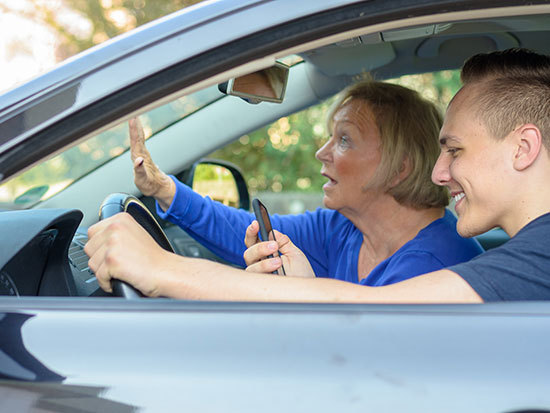Need more information? Contact us
 Stronger symptoms of technology addiction were associated with more frequent mobile phone use while driving for teen and parent drivers, but compared to parents, teens reported more severe mobile phone technology addiction symptoms. Mobile phone use while driving quadruples the risk for a motor vehicle crash, and is a practice that is particularly scary for novice teen drivers, given they are already at increased risk for motor vehicle crashes compared to other age groups.
Stronger symptoms of technology addiction were associated with more frequent mobile phone use while driving for teen and parent drivers, but compared to parents, teens reported more severe mobile phone technology addiction symptoms. Mobile phone use while driving quadruples the risk for a motor vehicle crash, and is a practice that is particularly scary for novice teen drivers, given they are already at increased risk for motor vehicle crashes compared to other age groups.
A new study from the University of Alabama at Birmingham sought to provide a better understanding of parent and teen distracted driving behaviors, in particular the factors that increase their frequency of mobile-phone-based communication with different types of people not in the vehicle with them, like family members and friends.
Jessica Mirman, Ph.D., an assistant professor in UAB’s Department of Psychology in the College of Arts and Sciences, conducted the study with colleagues from Children’s Hospital of Philadelphia, George Mason University and Minnesota Health Solutions. Ninety-four participants — 47 parent-teen pairs — completed a survey measuring their symptoms of mobile phone technology addiction, perceived risk of mobile phone use while driving, and their frequency of mobile phone use while driving with family members and friends not riding with them in the vehicle.
Stronger symptoms of technology addiction were associated with more frequent mobile phone use while driving for teen and parent drivers. Compared to parents, teens reported more severe mobile phone technology addiction symptoms. For teen drivers, the association between technology addiction symptoms and mobile phone use while driving was significantly stronger for communicating with their friends than it was for communicating with their parents.
“Not only did teen drivers report stronger symptoms of mobile phone technology addiction than their parents overall, but their symptoms appeared to have more influence on their communication with their friends than with their parents,” Mirman said. “The teen-to-teen interactions were more strongly tied to teens’ addiction symptoms than the teen-to-parent interactions.”
Mobile phone technology addiction symptoms were measured using a self-report survey. “For example, adolescents and parents reported on how often they used their phone to help them feel better when they are feeling down.”
For both teen drivers and their parents across all the communication partners, family and friends, stronger risk perceptions were associated with less frequent mobile phone use while driving.
| “Parents and teen drivers who are more aware of the risks of mobile phone use while driving are less likely to use their mobile phones behind the wheel.” |
“Parents and teen drivers who are more aware of the risks of mobile phone use while driving are less likely to use their mobile phones behind the wheel,” Mirman said. “Parents and teen drivers had similar levels of risk-perception, so we did not see evidence that teens view distracted driving as less risky than their parents.”
Parent drivers used their mobile phones to communicate with their children as frequently as teen drivers used their mobile phones with their friends.
“Our research indicates that efforts toward preventing mobile phone use while driving may be aided by interventions targeting specific social networks and the relationships within those networks — parents and teens have different patterns of mobile phone usage behind the wheel,” Mirman said. “It’s our hope that these findings can be a tool to guide future research on distracted driving, as well as prevention efforts.”